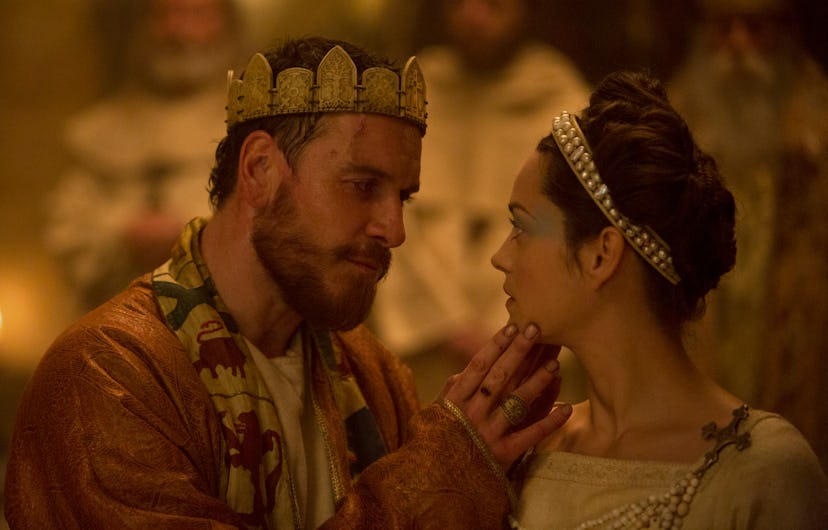Behind the Scenes of Macbeth
Director Justin Kurzel takes us behind the scenes of his stylized retelling starring Michael Fassbender and Marion Cotillard.

The Australian director Justin Kurzel’s spare, scorched vision of Macbeth, in theaters December 4, is not a joy to watch. It is an assault of gritty, stylized realism: The Bard’s soliloquies are not declaimed dexterously to an audience, they are hissed through clenched teeth. The three witches that prophesize Macbeth’s rise and fall are not dramatic devices, but hallucinatory symptoms of PTSD. And the brutal, angry terrain that stands in for 11th century Scotland (Kurzel shot on the Isle of Skye) never seems to emerge from the gloaming, always awash in tones of charcoal, steel, and iron (until the final battle, in which it’s set ablaze and bathed in a bloody red). “We were hoping it would rain everyday,” says Kurzel. “We wanted the conditions to look difficult to reflect how tough it was to live in those times, and to be those characters.”
The torment of Macbeth and his Lady, and their descent into guilt-ridden madness following his murderous coup of the throne of Scotland, are more bearable when Michael Fassbender (even more bedeviled than usual) and Marion Cotillard are the leads. Kurzel gives them a pretty hot sex scene in a rather sexless play, even if Lady Macbeth is urging her husband to knife the king while she straddles him. And though she does in fact commit suicide later, the hypothetical noose is a rope that Kurzel and his screenwriters have cinched to Macbeth more tightly than Shakespeare ever did—the film opens with the pair burying their dead child, an innovation that reframes their bloody power grab not as arising simply out of tragic ambition but of a couple’s grief. “There was something about these two traumatized characters who use ambition to reach out of their darkness,” Kurzel explains. “They become king and queen in their desperation to stay together.”
Photos: Behind the Scenes of Macbeth
“That’s me in the parka, and we’re about to shoot the scene in which the Macduff family burns. I’m talking to Marion about the fact that the man she’s spent her life with is about to burn children—the man she once loved, she no longer recognizes.”
“This is the battle scene at the beginning. We’re trying to get into Michael’s point of view as the soldier. Out of that trauma of war came his vision of the witches, so it was stylized in a way that made you feel like it was his POV rather than realism.”
“This is Lady Macbeth’s final soliloquy. A woman descending into madness has a hysteria about it—usually it’s done at night, with her holding a candle and kind of losing it. But Marion brought a quiet dignity to it.”
“Michael was already attached to the film when I came onboard—in fact, he was probably the biggest reason I said yes. Whenever I see him in anything, I never know what he’s going to do next.”
“I was doubly lucky when it turned out Marion was playing Lady Macbeth. They are equally formidable to each other.”